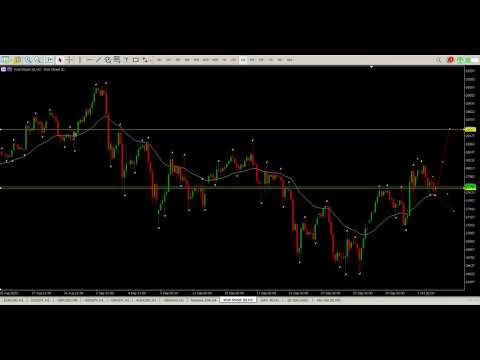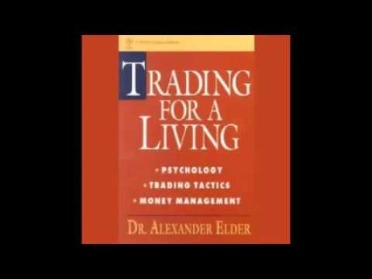Contents

A calendar call spread consists of two calls with the same strike price but different expirations. The position will profit if the underlying security price does not change much. The value of the short leg will decay faster than the value of long leg. A bull call spread is a bullish strategy that consists in having two call contracts. First, you buy the long call with a strike price, let’s say S1, and immediately afterward, you acquire a short call with a strike price of S2.

For example, if the https://en.forexbrokerslist.site/ price falls sharply, then the price of both calls approach zero for a net difference of zero. If the stock price rallies sharply so that both calls are deep in the money, then the prices of both calls approach parity for a net difference of zero. One of the most basic spread strategies to implement in options trading is the vertical spread. A vertical call spread is created when the short calls and the long calls have the same expiration date but different strike prices. If the stock price has moved down, a bear put debit spread could be added at the same strike price and expiration as the bull call spread. This creates a reverse iron butterfly and allows the put spread to profit if the underlying price continues to decrease.
Therefore, the risk of early assignment is a real risk that must be considered when entering into positions involving short options. Should the stock increase to $61, the value of the $50 call would rise to $10, and the value of the $60 call would remain at $1. However, any further gains in the $50 call are forfeited, and the trader’s profit on the two call options would be $9 ($10 gain – $1 net cost). For this strategy, the net effect of time decay is somewhat neutral.

On the other hand, the stock can go to zero in the case of a put option; thus, if you are short, your losses can be substantial . Click here to learn everything you need to know about vertical spreads. The debt-to-capital ratio calculator measures the contribution of interest-bearing debt to the company’s capital it uses to fund its operations. A stock option gives an investor the right, but not the obligation, to buy or sell a stock at an agreed-upon price and date. A call option is a contract that gives the option buyer the right to buy an underlying asset at a specified price within a specific time period. The bullish call spread can limit the losses of owning stock, but it also caps the gains.
Payoff Diagrams
The maximum profit is $300 if the stock closes above $55 at expiration. The higher the corporate bond yield, the more the investors require in return. So, in general, the higher the credit spread, the higher the cost of debt financing. It is important for a company to closely monitor changes in their bonds’ credit spread to limit credit spread risk. A diagonal call spread is created when long term call options are bought and near term call options with a higher strike price are sold.

The vertical bull call spread, or simply bull call spread, is used when the option trader thinks that the underlying security’s price will rise before the call options expire. Otherwise the option may be exercised to purchase the stock for the agreed strike price, or the options sold as expiration is approaching. A call option has no value and is said to ‘expire worthless’ if the stock price closes below the call’s strike price at expiry. There is no cap on the maximum possible profit using a long call strategy, and profit increases linearly with the rising price of the underlying stock. A strike at or below the stock price provides a balance of return and probability of profit. However, for a bullish outlook, the most profitable strike is usually between the current stock price and the price you expect the stock to reach on the date of expiration.
In short, YTM is defined as the total return an investor will gain if the bonds are held to maturity. It can be interpreted as how much the bonds the company has issued cost. The riskier the bond is, the higher the probability of default, and so the higher the YTM will be as investors will require a higher return to be convinced to invest in the risky bonds. That’s why it is important to understand the calculation of bond YTM. With this credit spread calculator, you can easily calculate the credit spread of a corporate bond before you make your investment decision. Credit spread is one of the most common metrics to assess the quality of a company’s credit and the bonds it issues.
Bear Call Spread Calculator
Second, shares can be purchased in the marketplace and the long call can be left open. Generally, if there is time value in the long call, then it is preferable to purchase shares rather than to exercise the long call. It is preferable to purchase shares in this case, because the time value will be lost if the call is exercised. If the stock falls below $50, both options expire worthlessly, and the trader loses the premium paid of $100 or the net cost of $1 per contract.

Long https://forex-trend.net/s, therefore, rise in price and make money when volatility rises, and short options rise in price and lose money when volatility rises. When volatility falls, the opposite happens; long options lose money and short options make money. “Vega” is a measure of how much changing volatility affects the net price of a position. To profit from a directional stock price move to the strike price of the calendar spread with limited risk if the market goes in the other direction. To profit from neutral stock price action near the strike price of the calendar spread with limited risk in either direction.
But we gain $606 on the short $50 strike calls, as we keep all the cash received when opening the position. Search a symbol to visualize the potential profit and loss for a calendar call spread option strategy. The following section will cover examples for the four vertical spread option strategies in our options spread calculator.
Therefore a “horizontal spread” involved options in the same row of the table; they had the same strike price but they had different expiration dates. If the short call is assigned, then stock is sold and a short stock position is created. In a long calendar spread with calls, the result is a two-part position consisting of short stock and long call. This position has limited risk on the upside and substantial profit potential on the downside.
Valuing Common Stock using Discounted Cash Flow
Besides the “default” position entered in rows 9-12, you can create a second “alternative” position in rows below the chart. The inputs are the same (position, instrument type, strike, initial price in columns C-F). You can also use the calculator to model position variations, for example when deciding which strikes to use for a potential trade.
In practice, investor debt is the net difference between the two call options, which is the cost of the strategy. If your forecast was correct and the stock price is approaching or above strike B, you want implied volatility to decrease. That’s because it will decrease the value of the near-the-money option you sold faster than the in-the-money option you bought, thereby increasing the overall value of the spread. We will start by explaining what an option spread is, and then move on to discussing the concepts of credit spread and debit spread option, and wrap up with some examples. As mentioned above, credit spread helps assess the credit quality of a company. Thus, credit spread widening often signals a deterioration in the company’s credit quality.
- If the short call is assigned, then stock is sold and a short stock position is created.
- At the same time, you will sell the back-month call to close your position.
- If you have not checked our excellent call put options calculator yet, we highly recommend you do.
- If the calls are deep in the money, then the delta of the long call approaches +1.00 and the delta of the short call approaches −1.00 for a net spread delta of 0.00.
- If exercised before the expiration date, these options allow the investor to buy the asset at a stated price—the strike price.
- Out-of-the-money call options are used to construct the bull calendar call spread.
“Delta” estimates how much a position will change in price as the stock price changes. Long calls have positive deltas, and short calls have negative deltas. To implement a bull call spread involves choosing the asset that is likely to experience a slight appreciation over a set period of time .
A https://topforexnews.org/ is exited by selling-to-close the long call option and buying-to-close the short call option. If the spread is sold for more than it was purchased, a profit will be realized. If the stock price is above the short call option at expiration, the two contracts will offset, and the position will be closed for a full profit. A bull call debit spread is a multi-leg, risk-defined, bullish strategy with limited profit potential.
Conceptually, there are two breakeven points, one above the strike price of the calendar spread and one below. However, since the time value of the long call depends on the level of volatility, it is impossible to know for sure what the breakeven stock prices will be. The options marketplace will automatically exercise or assign this call option. The investor will sell the shares bought with the first, lower strike option for the higher, second strike price.
An out of the money option has no intrinsic value, but only possesses extrinsic or time value. Long 3 contracts of 45 strike call option, bought for 4.38 per share. WACC calculator finds the weighted average cost of capital for your company. If you have not checked our excellent call put options calculator yet, we highly recommend you do.
Most often, during times of high volatility, they will use this strategy. You can see the alternative position’s P/L at different underlying prices in cells K30-N40. Its maximum profit, maximum loss, and risk-reward ratio are in cells I38-I40. Column I shows profit or loss, which is the sum of initial cash flow and payoff at expiration . We lose $513 on the long $45 strike calls, which we initially bought for $1,314, but they are worth only $801 at expiration.
Because time decay accelerates close to expiration, the front-month call will lose value faster than the back-month call. After the trade is paid for, no additional margin is required if the position is closed at expiration of the front-month option. You want the stock price to be at strike A when the front-month option expires. This way, you can compare the bull call spread to a $45 strike long call , to a ladder or ratio spread. For setup, you can use the buttons below the alternative position to clear alternative position, copy one position to another, or switch the two positions. Cell F9 is the price for which the lower strike call option is bought when opening the position.
Where to Find Bull Call Spread
Before assignment occurs, the risk of assignment can be eliminated in two ways. First, the entire spread can be closed by selling the long call to close and buying the short call to close. Alternatively, the short call can be purchased to close and the long call can be kept open. The time value portion of an option’s total price decreases as expiration approaches. “Theta” is a measure of how much time erosion affects the net price of a position.
If a trader has a bearish forecast, then this position can be maintained in hopes that the forecast will be realized and a profit earned. If the short stock position is not wanted, then the position must be closed either by exercising the call or by purchasing stock and selling the call . A long calendar spread with calls realizes its maximum profit if the stock price equals the strike price on the expiration date of the short call.

